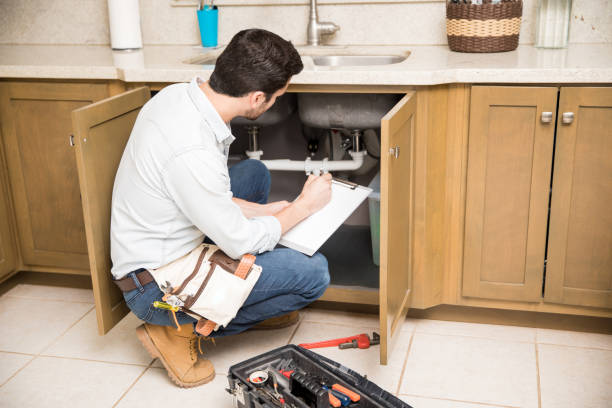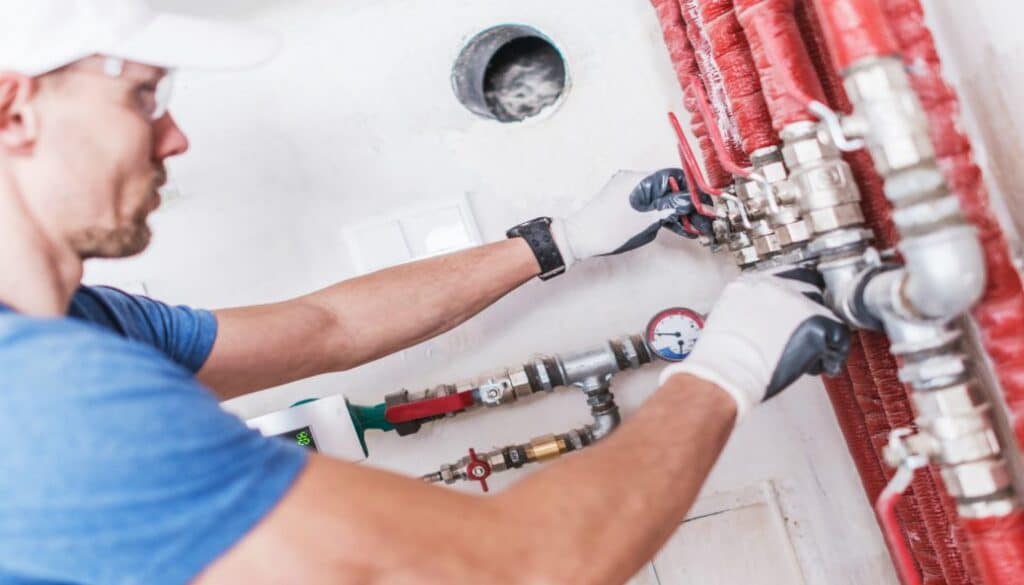We have unearthed this post involving When to Call a Plumber? DIY or Professional Help down the page on the net and think it made sense to relate it with you on this site.

Intro
Plumbing issues can vary from minor inconveniences to major frustrations, typically prompting homeowners to determine in between tackling the issue themselves or hiring a professional plumbing. Understanding when to do it yourself and when to look for professional aid can save time, money, and stop prospective disasters. This short article explores the variables to take into consideration when making this critical choice.
Benefits of Do It Yourself Pipes
Taking on pipes tasks on your own can be satisfying in several means, especially for simpler jobs.
Cost Financial savings
DIY pipes projects commonly save money by staying clear of professional service fees. Jobs like fixing minor leakages, changing taps, or installing brand-new showerheads are examples where property owners can take care of repair work without hiring a plumbing.
Ability Improvement
Taking part in DIY plumbing offers an opportunity to find out and improve useful skills. Standard jobs encourage homeowners to understand their pipes systems far better and get confidence in managing tiny fixings separately.
Risks of Do It Yourself Pipes
While DIY tasks provide benefits, specific risks should be thoroughly thought about before trying repair work.
Intricacy of Tasks
Some plumbing concerns require specific expertise and tools beyond regular homeowner abilities. Messing up intricate troubles can lead to further damage and costly repairs.
Safety and security Concerns
Working with pipes systems entails dangers such as exposure to water damage, potential for electric dangers, and handling tools inaccurately. Safety and security preventative measures should be observed to stop crashes and ensure efficient repair services.
Indicators to Call a Specialist Plumbing Professional
Acknowledging when a plumbing problem exceeds do it yourself capabilities is crucial to stop aggravating problems.
Indications of Facility Problems
Instances consist of:
Trigger specialist intervention is required to deal with these problems properly and decrease damages.
Do It Yourself Pipes Tips
For effective do it yourself pipes, it's vital to be prepared with the right devices and follow proper procedures.
Fundamental Tools and Products
Key tools for DIY plumbing:
Step-by-Step Guides
Clear directions ensure risk-free and reliable DIY repairs:
Picking the Right Time to DIY
Figuring out when to take on plumbing tasks yourself needs assessing both the complexity of the issue and personal convenience degrees.
Analysis List
Take into consideration:
When to Absolutely Call a Specialist
Particular scenarios demand instant professional interest to avoid extensive damages or safety hazards.
Instances include:
Finding and Hiring a Professional Plumbing
Choosing a certified plumbing technician makes sure trusted solution and assurance in dealing with pipes problems.
Criteria for Option
Elements to take into consideration:
Expense Evaluation: DIY vs. Expert Providers
Comparing the monetary effects of do it yourself efforts versus professional plumbing services assists in making educated choices.
Financial Considerations
Evaluate:
Verdict
Choosing whether to do it yourself or call a specialist plumbing technician rests on recognizing the complexity of plumbing problems and personal abilities. By considering the benefits and risks, homeowners can make enlightened options that promote effective maintenance and secure their homes from plumbing calamities.
When to DIY and when to call a professional plumber
There are Australian laws and regulations that regulate plumbing work in Australia. This means that there are few home plumbing tasks that you can DIY. Besides, a lot can go wrong with DIY plumbing projects. However, there are also plumbing works that you can successfully DIY. Read on to know when to DIY and when to call a professional plumber.
You can learn more about the risks of DIY plumbing projects, projects requiring special caution, and illegal DIY plumbing works to avoid. This post concludes with the services of commercial plumbers and why getting expert help is essential.
Reasons to Attempt DIY Plumbing Projects
While it is often not advisable to perform DIY plumbing repairs, several pros of DIY plumbing projects can make them attractive.
Save costs
A significant reason for doing DIY plumbing jobs is to save costs. It is possible to save on labour charges and overall fees if you buy the needed tools and parts from local hardware stores and do the repairs yourself.
Gaining experience
You can gain some hands-on experience in basic plumbing repair if you watch online videos and attempt the repairs yourself.
Confidence boosting
You can boost your confidence and self-reliance skills by performing DIY plumbing repairs and installations yourself.
Risks of DIY Plumbing Projects
If something goes wrong with your DIY plumbing project, you may have unfavourable results that you may consider the cons of DIY plumbing.
For one, your home may get so extensively water-damaged that your home and contents insurance will not cover you. You will also have to spend more money to repair the water or sewage problem than you would otherwise spend for professional plumbing jobs. Besides, you may often spend more time on DIY plumbing work than an experienced plumber would spend. This is because you may not have the needed skill set. There are also related safety hazards and potential threats of DIY plumbing jobs that you may need to consider. Plumbing Issues You Can Fix Yourself
You can attempt DIY plumbing for plumbing issues such as replacing tap washers, installing shower heads or performing minor tap leak repairs. However, it would help if you invited licensed plumbers to fix complex leaking showers, effectively deal with blocked drains, or repair hot water systems. This is the best way to ensure these plumbing issues are correctly fixed, and the project is insured.
Fixing clogged or blocked drains
You may have clogged drains or need help with slow-draining showers. These are tasks that you can resolve yourself using several options. To fix blocked drains, you may use baking soda, plungers, or wire hangers. Meanwhile, you can take the preventive measure of installing filtration systems such as drain filters to help prevent drain clogs.
New faucet installations
It is possible to install a new faucet yourself. You would have to turn off the hot and cold water valves. Then, you can remove and fix the old faucet and replace it with the new one.
Leaky faucet repairs
While leaky faucet repairs are more technical than installations, you can also take some steps to fix them. Turning off water valves is the first step in draining water from plumbing systems. Next, you can use a washcloth to cover the drain and remove the decorative handles.
This will allow enough room to unscrew the nuts that attach the faucet handle to the stem. Your final step is to take out and replace the old washers and O-rings with the new duplicates.
Fixing running toilets
An occasional DIY solution for running toilets is to restore the flapper in the tank to its proper place.
Burst pipes
You may have issues with your exterior plumbing fixtures. It may simply be that your inbound or outbound pipes have worn out, or you may have burst pipes due to flooding or large tree roots.
You may also have frozen pipes. These are all instances when you need to call a professional plumber. They will perform pipe inspections to locate the problem and implement solutions such as pipe relining.
Interior plumbing repairs
It's usually time to call a competent plumber if you want to do plumbing repair work on floors, ceilings, or the walls of your building. They can also help you fix faulty showers and sinks.
Plumbing renovation
Major renovation projects or plumbing jobs such as bathroom remodelling and bathroom renovations require the services of a professional plumber. Likewise, you need a professional plumber to fix your kitchen sink or plumbing. They can help you get the required plumbing permits. At the same time, they know what building codes apply to such renovation projects.

I hope you enjoyed reading our topic on DIY vs. Professional Plumbing Repairs: When to Call a Pro. Many thanks for finding the time to read our posting. In case you appreciated our blog posting plz remember to pass it around. Kudos for your time. Revisit us soon.
Click